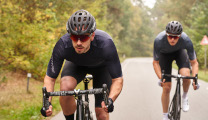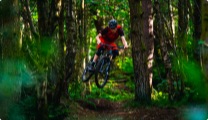The high-pace racing side of gravel is gaining ground but as it’s still in the early days, you don’t always know what you’re letting yourself in for when you pin on a number.
Shifting away from gravel’s stereotypical tin mug, beers and bivvy-bagging image, we checked in with Shimano Gravel Alliance rider Dalila Lecky for her top tips for getting stuck into the UK gravel race scene, learning how to push yourself for three hours of intense racing and what it’s like to taste blood on the widely diverse performance side of the sport.
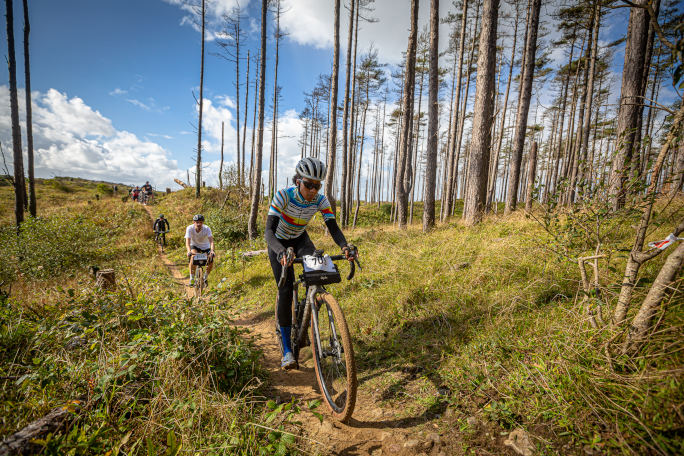
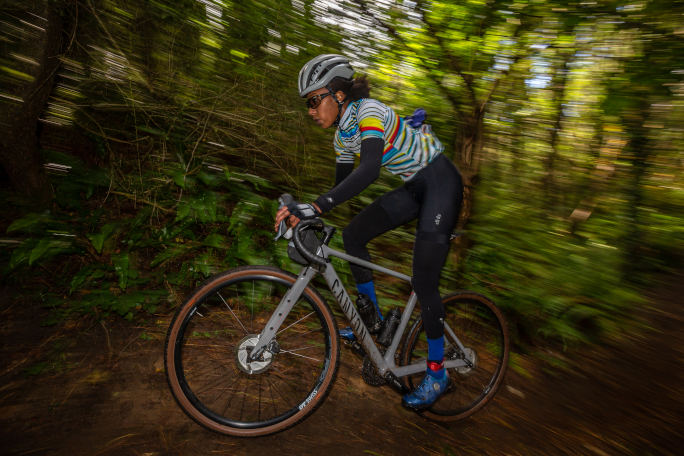
“When most people think of gravel racing, they think about bikepacking and epic distances,” begins Dalila, who’s known for pinning on a number across the UK at countless gravel and cyclocross races. “There’s an understanding that it has to involve riding hundreds of kilometres over many days and nights, where your ability to ride fast over varying terrain needs to be balanced by your resourcefulness and ability to function on limited sleep. The stories that come out of these races are things of legend, and the riders themselves gain a level of notoriety, having proven their mettle in the difficult conditions that inevitably arise.”
But that’s only a fraction of the story.

Battle on the beach - Gravel racing is an incredibly diverse activity. Races vary in format, length, terrain, surface, and even atmosphere. While "Beach racing" is established in the Benelux counties, it's considered "gravel" elsewhere.
"Though these ultra-endurance gravel races hold a lot of appeal—who wouldn’t love the opportunity to realise your potential and push yourself beyond your known limits? —they simply don’t mesh with having a full-time, non-cycling day job. It’s not just the vacation time that you or I would need to use up to compete in these longer events, it’s also the training time that precedes it. Some riders manage to juggle these things, but I tend to end up feeling a little burned out. The simple fact of the matter is that shorter events don’t require such a substantial time commitment."
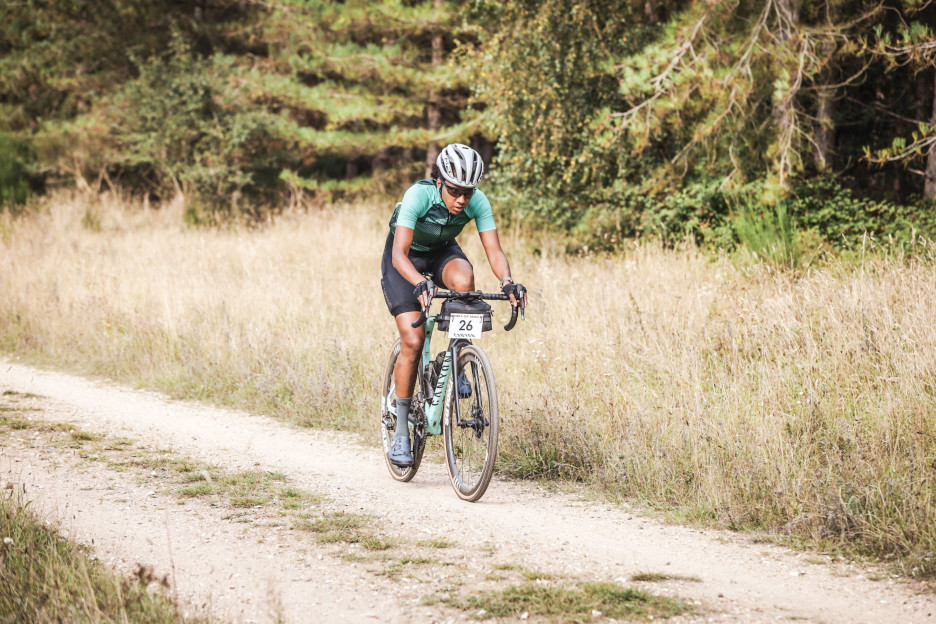
Kings Cup, often the stage for the British National Gravel Championships, it's a road rider-friendly, mellow gravel route designed for speed.
So, what are the some of the options in a time-limited world?
First up: Grinduro, held worldwide.
It’s raced over one day on a route totalling roughly 90 km and containing four-to-five timed sectors of a few kilometres each. The rest of the day is taken at a social pace, riding alongside friends and having fun, not forgetting the festival vibe that awaits us at each feed stop and back at the event arena. It’s super easy to set off from home on a Friday evening, race Grinduro on Saturday and then be back home on Sunday, ready to start another working week. Training for an event like Grinduro generally comes down to how seriously you intend to race it, which brings us to another aspect of shorter gravel races—there is always a cohort who don’t intend to race it at all and ride it more as a sportive. If you are looking to be at the sharp end, the segments can be anything from 2–12 minutes, so it’s easy to integrate into regular training.
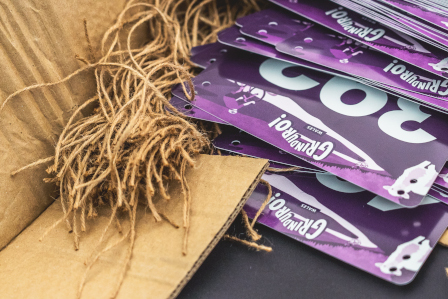

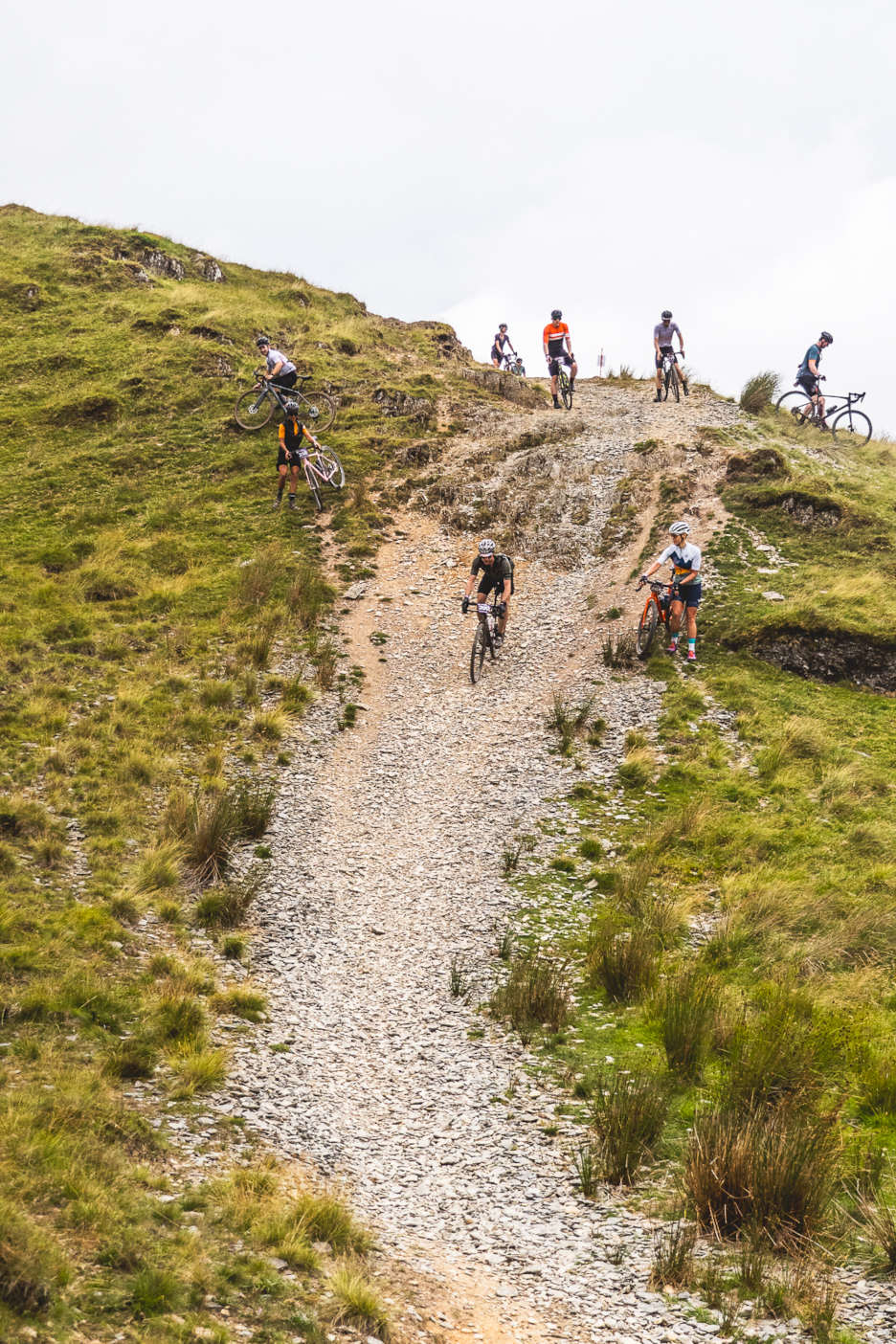
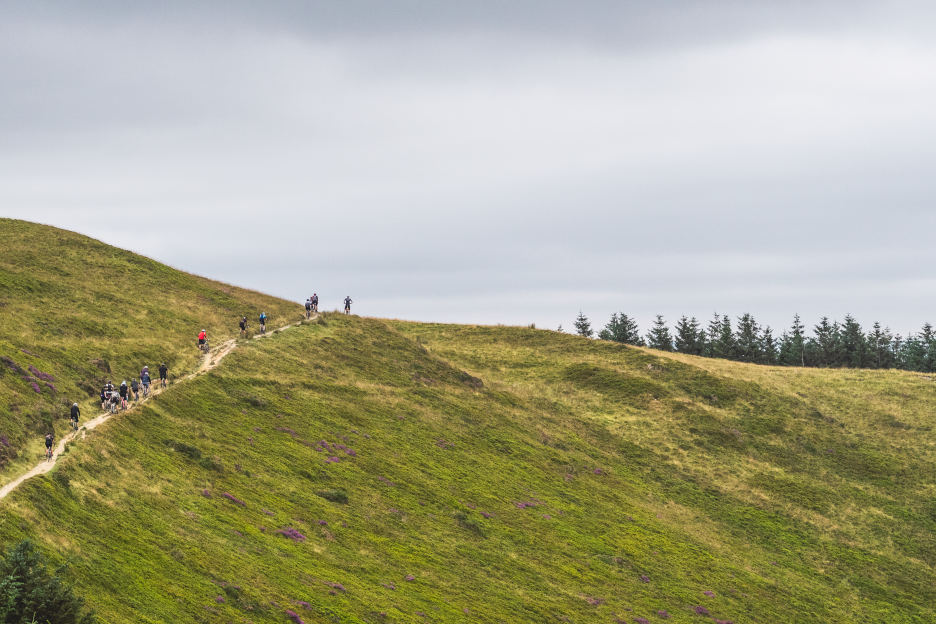
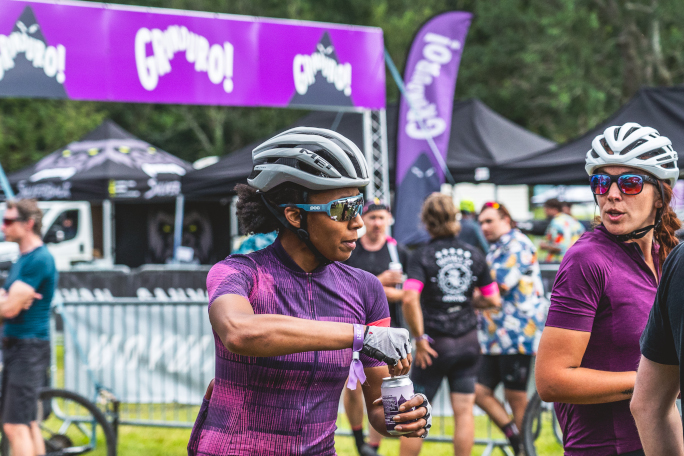

Photos: Dan Monaghan, at Grinduro Wales
“Party-pace” riders complete the timed segments at the same pace they would do on a normal day ride, whilst those at the pointy end of the race push themselves into the red hoping to get onto the podium and nab one of those unique Grinduro trophies. I consider myself to be somewhere amongst the latter, though I haven’t made it onto the podium yet! The great thing about Grinduro and the re-grouping at the feed stations is that it creates a space that allows you to ease off without leaving you feeling like you’re off the back of a racing bunch and visibly losing time. This is a stress factor that I have felt in past multi-day events where every rider has a GPS tracker. I’d catch myself looking at the map, seeing where the other dots are and feeling that I have to push on because people are dot-watching and will notice that I’m falling behind. I personally don’t like this pressure, and an event like Grinduro removes it entirely by using each rider’s tracking chip to just record the timed segments, so in theory, you could set off dead last, be at the back all day, and still win!
What you need to know before riding Grinduro:
- Gearing: Think about the steep climbs and the need go fast on the segments, so make sure you’ve got a wide gear ratio.
- Wheels: Your tyre and wheel set-up will be more important than your gears here. You’ll want 700cs with a width up to 42 mm. The amount of bite on the tread will depend on the terrain, so check it out before you set off.
- Same with tyre pressure – keep an eye on the weather forecast. You’ll want a lower tyre pressure with more bite if there’s a lot of wet ground, but be mindful it’ll drag on gravel. Tubeless is a must for a race scenario!
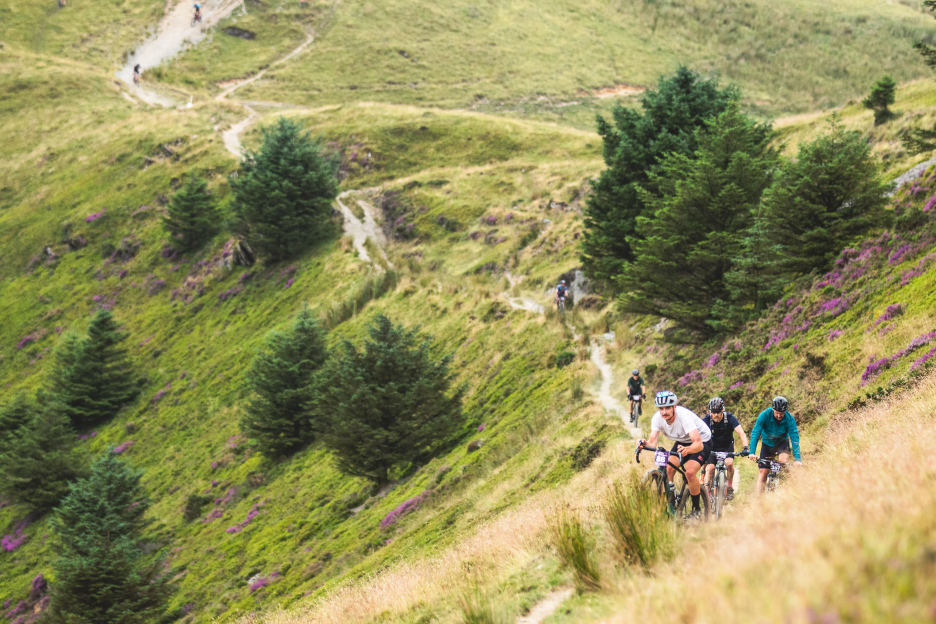
Photo: Dan Monaghan at Grinduro Wales

In it for the trophies: Championship gravel racing
On the other end of the one-day gravel racing spectrum, there are events like the UCI Gravel World Series, and the UK National Championships that have recently been held at the King’s Cup Gravel. I haven’t spoken much about my experience at the King's Cup Gravel Championships since competing, and that’s primarily because it was 70km of the most full-on racing I’ve ever experienced, and I was so incredibly underprepared. I remember standing on the start line, looking left and right, seeing several pro and ex-pro riders and thinking, ‘this is definitely going to hurt’. It was almost three hours (much less for the winner!) of relentless off-road riding, no opportunities for a breather, and almost no time to eat any of the snacks I had stashed in the pockets of my cargo bibshorts. I did learn some important things from that event though: Firstly that I prefer a much more technical course; and secondly that I need to properly train and taper for that length and style of race, not just stick to my usual off-road activities (it seems so obvious in hindsight).
In 2023, there's going to be a round of the UCI World Series in Scotland that you'll probably see me lining up at.
What you need to know before a championship gravel race:
- Gearing: For a one-day race – especially if it’s a championship – you can look towards a closer gear ratio at the back with a narrower range if it’s a flatter course where you’ll focus more on speed rather than controlling your exertion on hills.
- Tyre and wheel set-up: You might want to go for something a bit lighter here as it’s the all-or-nothing mentality of racing steps in. Any mechanical issue will put you out of the competition anyway, so no need to add weight for sake of durability.
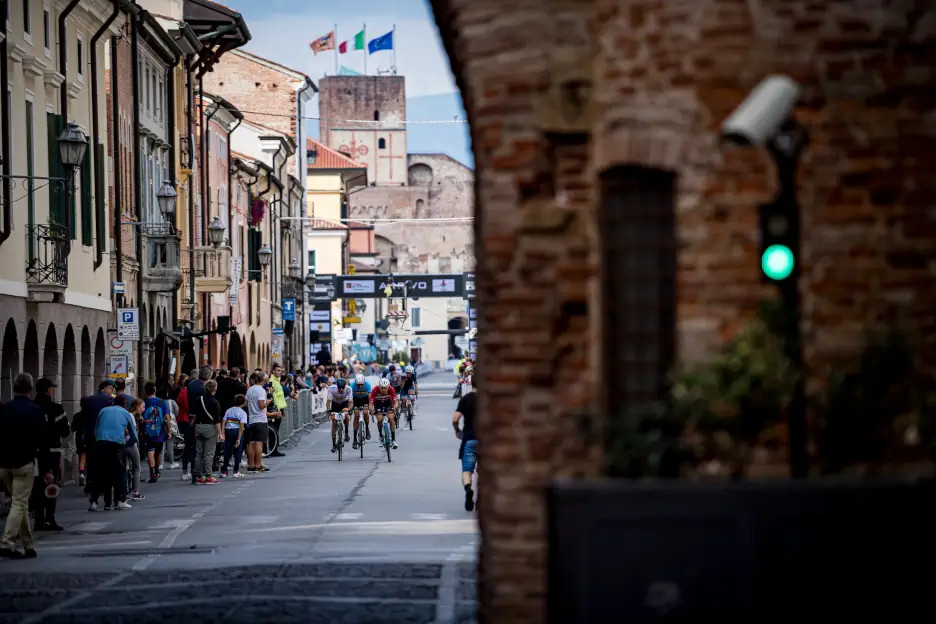
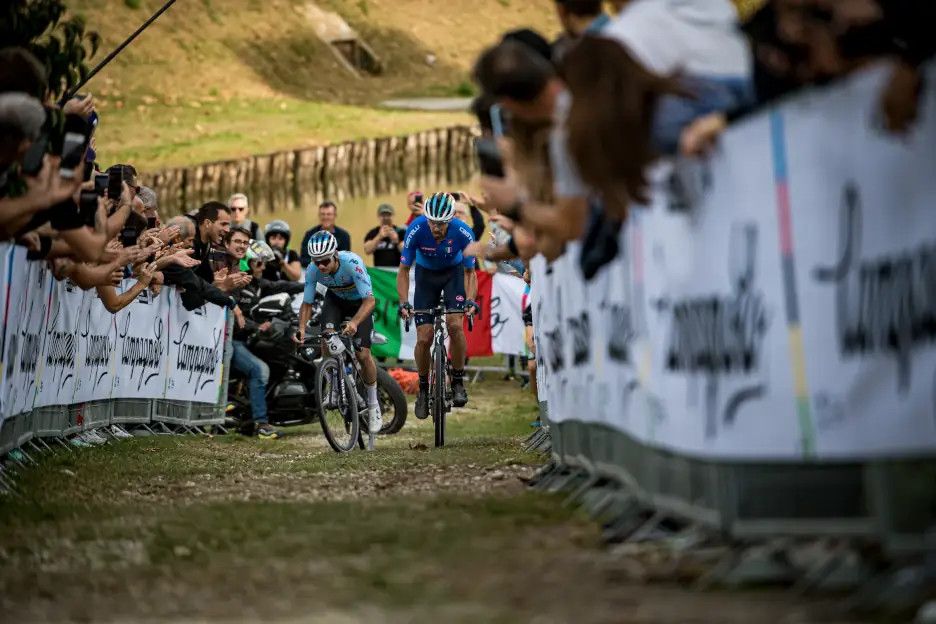
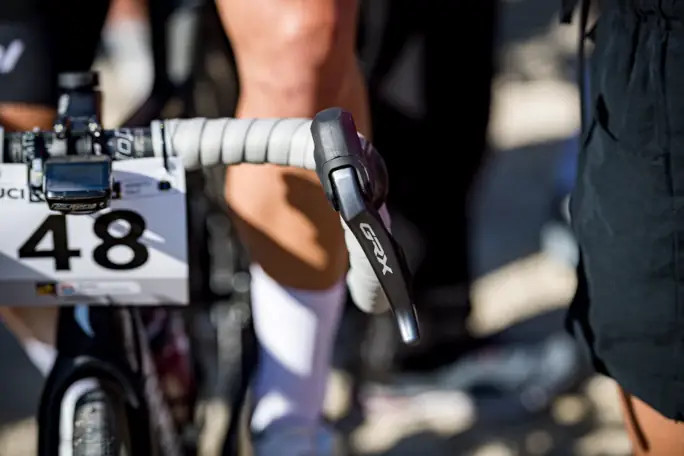
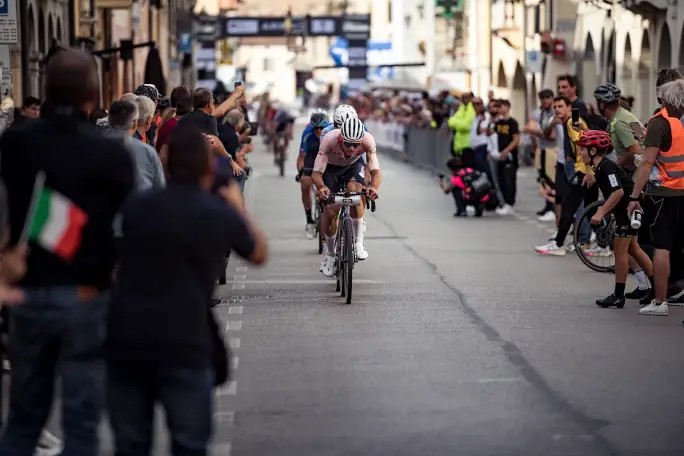
Photos: Phil Gale/Emmie Collinge
Think of beach racing like gravel's second-cousin
Racing hard for a couple hours in the fresh Welsh winds is definitely more my thing. Battle on the Beach is an event held in early spring with 45km of sand. I absolutely loved it! It wasn’t a pure test of power—you also needed fairly decent bike handling ability. The variety of bikes present (gravel, MTB, CX and even a few fat bikes) was a clear representation of the varying conditions around the course, each rider having chosen what they felt would fare best. The constantly changing terrain, the need to occasionally get off and run, or to ride a sandy descent more carefully or else risk crashing, meant that the racing was punctuated by small moments of recovery. This was definitely an event more suited to my skills and available training time, and one I would certainly race again and recommend to anyone who enjoys an occasional bit of #underbiking.
What you need to know before a beach race:
- Gearing: Close ratio as it’s a purely flat across the sand.
- Wheel choice: Go as aero as possible.
- Tyres: Big and at a low pressure! A slick tyre will work fine, but go for as wide as possible (we know, it sounds odd with an aero set-up but big groups will form on the beach).
- Post-race: Sand and salt water will corrode your components so make sure you wash your bike as soon as possible and re-lube it. Check your disc pads as sand is very abrasive and can rapidly wear them.
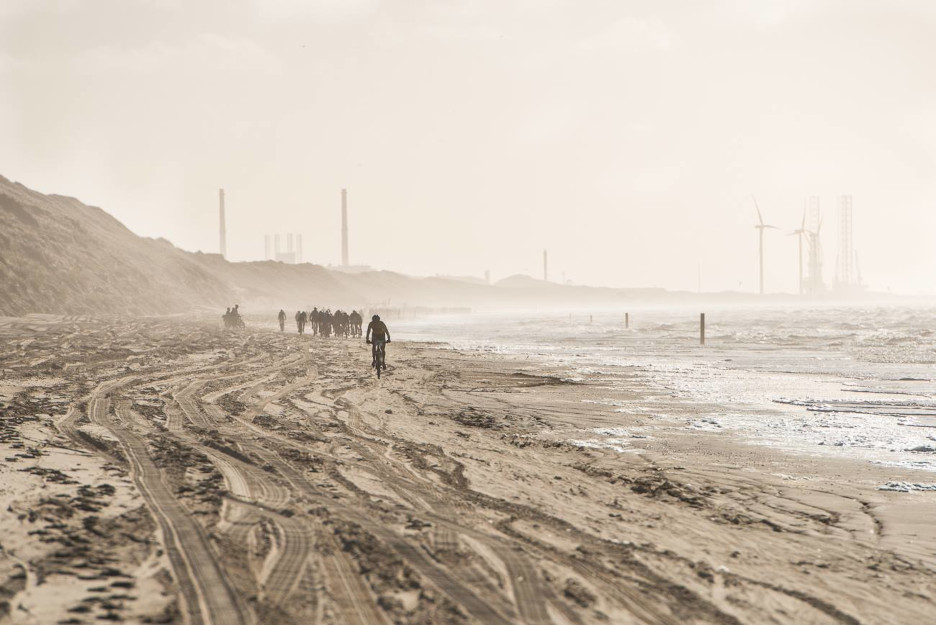
Photo: Phil Gale
And when the lights go out...
The great thing about race day is that it is not exclusive to daytimes. In London, for example, there are some brilliant rogue events on the calendar at all times of the day. One standout event is a night-time race called Muddy Hell, which is admittedly cyclocross so not technically gravel. But if you look hard enough, you'll find gravel versions too. Short, fast, furious: those are the best ways to describe it. For someone who works during the day, it’s the ideal way to let off steam and do something that combines your favourite sport with a very social element.
Top tip: Good bike lights and mud tyres are essential.

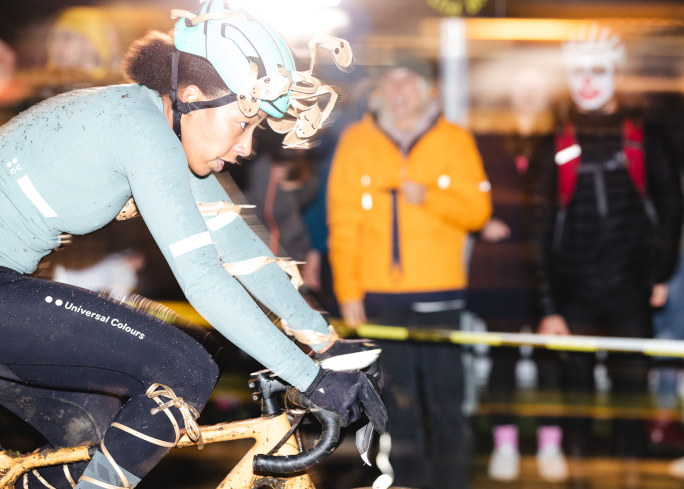
Looking ahead to the 2023 racing season
Over the past couple of years, I’ve realised just how good one-day races are as a way to temporarily escape the daily grind, so I’ve got a few on my calendar for 2023 already and I’m confident that they’ll keep me motivated to stay in peak fitness.
I’ve also taken the plunge and booked a bit chunk of time off work this summer as I have registered for my first ultra-endurance gravel race.
It's hard to predict how that’ll go, but it’s fun to try things on two wheels.

Battle on The Beach - www.battleonthebeach.co.uk
